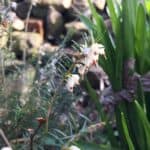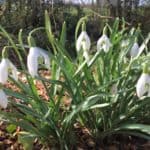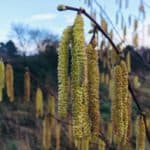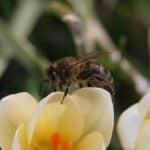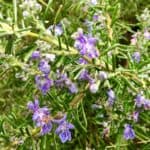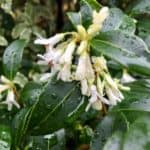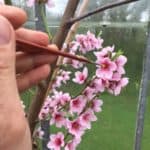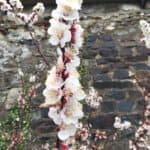POLLEN A SOURCE OF PROTEIN
Comprising of protein, sugars, minerals, vitamins, and fatty acids, pollen is nutritionally important for bees.
You can often tell the what flowers the bees have been visiting by the colour of the pollen they are returning to the hive with.
Below is a colour guide matching the colour of the pollen with the flower. Quite often, by matching the colour of the pollen with the month, you can identify what flowers the bees have been visiting.
Bees returning with pollen can indicate to the beekeeper that the queen is laying as the pollen is primarily used for feeding the brood (baby bees).
In early spring months, when the first flowers start to appear, the bees take every opportunity on warm dry days to go foraging. Early spring flowers such as snowdrop, crocus and blackthorn are a valuable source of pollen so early in the year when sources are limited.
Returning to the hive, the bees process and store the pollen making what is called ‘bee bread’. This is subsequently used to feed the brood, the next generation of bees.
More details about pollen is given after the colour chart at the end of this page.
SPRING POLLEN COLLECTED BY OUR BEES IN NORTH DEVON
The colour of the pollen from spring flowers vary in shades of pale cream to dark orange
Winter Heath
December/February
Not within flying distance of Exmoor, the bees have access to Winter Heath in our garden and probably gardens near by. Exhibiting masses of pendulous, vase shaped flowers, ranging from white to light pink to deep pink, this is probably one of the few plants that can supply pollen in December.
What is the difference between pollen and nectar?
Bees visit flowers for two reasons, to collect pollen and nectar. Different flowers offer varying ratios of pollen and nectar. Some maybe a good source of nectar, but a poor resource for pollen and vica versa. The bee is however, visiting the flower for one of these highly valuable foods.
The flower typically produces nectar to attract the insects, such as the honey bee, and in return hopes that some of it’s pollen will be passed to related flowers assisting in cross pollination and genetic diversity. In turn the receiving plant will produce seed for the next plant generation.
Plant for Bees
I would like to think that this guide, not only acts as a reminder for beekeepers and naturalists but illustrates to gardeners and those interested in helping the bees, what flowers are contributing to the bee’s diet. The more plants producing pollen available to bees at different times of year, not only brightens up our environment but delivers direct benefits to wildlife.
As a note, the month(s) shown when the pollen and flower is available, is for North Devon. This will vary depending on where you are in the United Kingdom and the weather conditions for the season.


